You have no items in your shopping cart.
Tang Yuanling Mausoleum
Introducing Yuanling Mausoleum of Tang Dynasty
Tang Yuanling Mausoleum is the final resting place of Emperor Daizong of Tang, the 8th emperor of the Tang Dynasty. Located in Fuping County, 75 kilometers north of Xi'an, the Tang Yuanling Mausoleum is built into the mountain face of 851-meter-high Mount Tanshan. Emperor Daizong ascended to the throne in 762 following the death of his father, Emperor Suzong. He was the first Tang emperor to succeed to the throne as a result of maneuvers by eunuchs. During the An Lushan Rebellion, which took place from 755 to 763, Daizong served as general of Tang and Huige joint operations that recaptured the capital Chang'an and the eastern capital Luoyang from the rebels. The rebellion was finally put down early in his own reign. Daizong died in 779 at the age of 54. He was buried at Yuanling Mausoleum in November of that year. The Tang Yuanling Mausoleum was looted in 908 by the local governor of Yaozhou during the period of Five Dynasties after the Tang Dynasty was overthrown in 907.
Watch this video showcasing Yuanling Mausoleum of Tang Dynasty
Kind Notice: This video is not available in China (YouTube is blocked). If you are in China, click here.
Yuanling Mausoleum of Tang Dynasty Fast Facts
• Chinese Name: Tang Yuan Ling 唐元陵
• Best Time to Visit: All year round
• Recommended Visiting Hours: 2 hours
• Distance from Xian: 72 km (45 mi)
• Opening Hours: All day
• Entrance Fee: Free
• Address: Zhangjiayao Village, Fuping County, Shaanxi Province
What to expect at Yuanling Mausoleum of Tang Dynasty
Yuanling Mausoleum is a Mid-Tang period tomb that was modeled after Qianling Mausoleum and Tailing Mausoleum. Three ceremonial gate towers were built south of the tomb mountain, representing the three cities (outer city, imperial city and palace city) that made up the capital Chang'an. The Spirit Way was built between the second and third ceremonial gate, serving as the guard of honor to accompany the emperor's soul to the heaven. Originally, the Spirit Way was lined with a succession of stone statues, including a pair of ornamental columns, a pair of winged horses, a pair of ostriches, five pairs of saddled horses, 10 stone statues of civil officials, and 10 stone statues of military officials. Today, only 11 stone statues remain, including one damaged winged horse, one small saddled horse, 5 civilian official statues, and 4 military official statues. The tomb mountain of Yuanling Mausoleum was protected by an earthen wall with four gates opened on its four cardinal directions. Two stone lions, one male and one female, were placed inside each gate, serving as guarding lions. The guarding lions of the south Vermillion Bird and east Azure Dragon are no longer present.
The Spirit Way
The Spirit Way is an ornate road that leads to a Chinese imperial tomb, beginning at the Ornamental Columns and ending at the Vermilion Gate. It represents the journey of the deceased emperor’s soul into the spirit world. The Spirit Way of Yuanling Mausoleum measures 600 meters in length from south to north and 50 meters in width from east to west. Initially, the Spirit Way of Yuaning Tomb began with a pair of Ornamental Columns, followed by a pair of winged horses, a pair of ostriches, five pairs of saddled horses, and 10 pairs of government officials. The Spirit Way concludes at the South Vermilion Gate. However, due to the construction of a military factory on the spirit way in the 1960s and the Cultural Revolution, most stone sculptures were destroyed. Today, only one winged horse, one saddled horse, five civil officials, and four military officials remain in service, standing proudly in the village and fields.
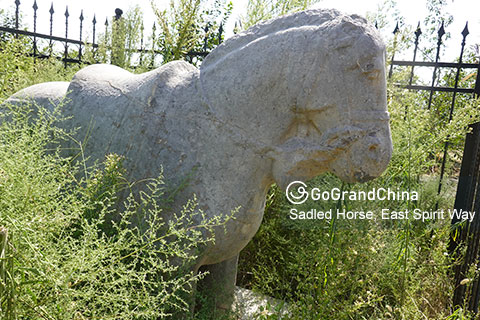
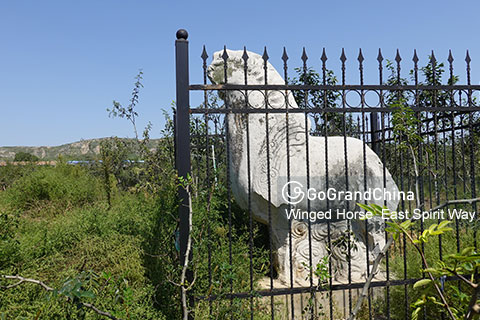
Winged Horses
In ancient China, winged horses were seen as auspicious creatures, representing power and fortune. However, only one of these winged horses, the one on the east side, has survived the ages. The winged horse on the west side was destroyed.
Saddled Horses
The saddled horses were part of the guard of honor, but unfortunately, nine of them were destroyed. Today, only one horse remains standing on the east side of the Spirit Way.
Guardian Statues of Civil & Military Officials
Wengzhong, the Chinese term for guardian statues of civil and military officials, originated from a giant man of great strength who served as a general under China’s first emperor, Qin Shihuang. Wengzhong was garrisoned in Lintao, the west end of the Great Wall during the Qin Dynasty, and had earned merit in the fight against the Huns. After his death, Emperor Qin Shihuang ordered a bronze statue of Wengzhong to be made after him and placed outside his palace, serving as a bodyguard. From then on, bronze or stone statues of humans were called Wengzhong. These stone guardian statues symbolize real civil and military officials guarding the tombs. Today, five civil officials are found standing on the east side of the Spirit Way, while four military officials are found standing on the west side of the Spirit Way.
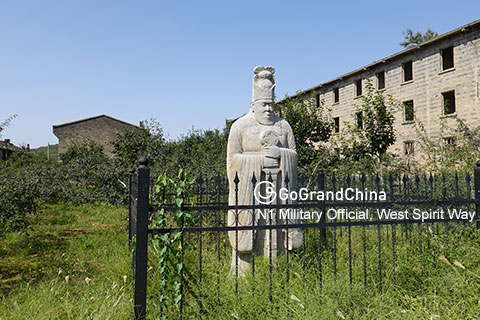
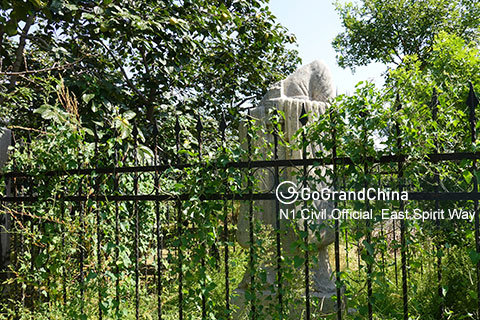
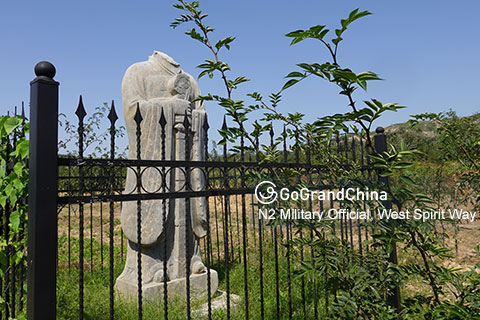
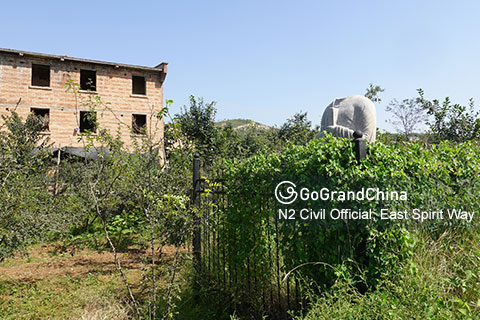

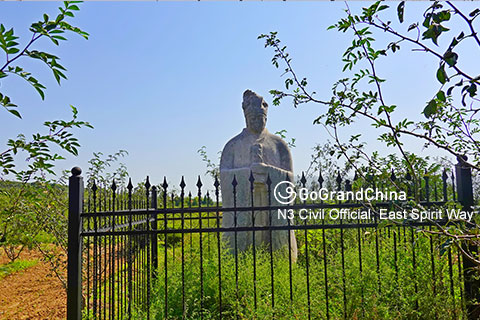
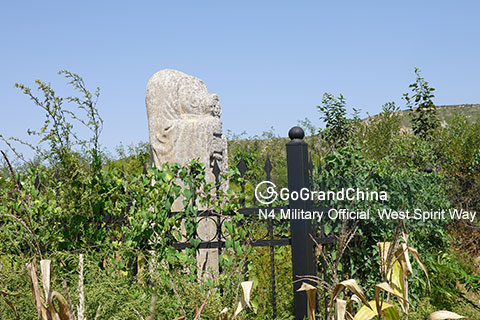
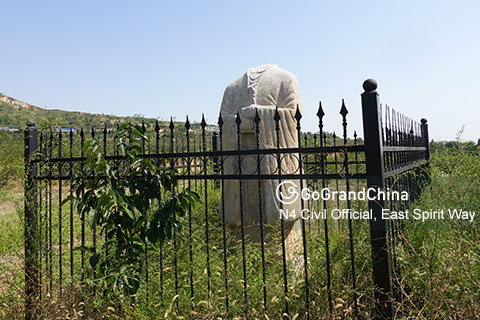
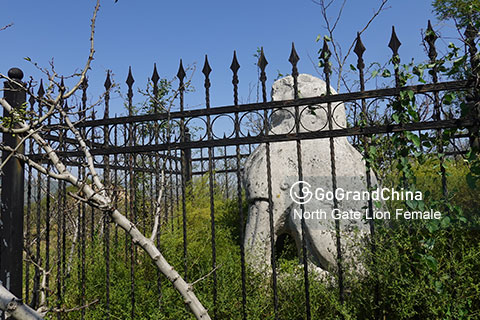
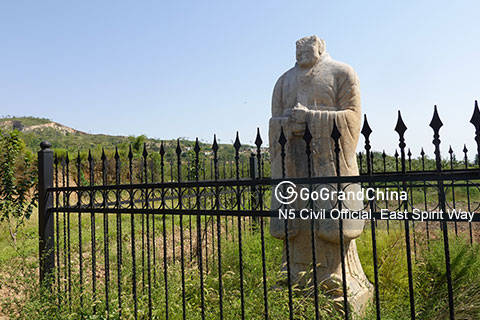
The Vermilion Bird Gate
The Vermilion Bird is one of the Four Symbols of the Chinese constellations, representing the southern direction. The south gate of Yuanling Mausoleum, known as the Gate of Vermilion Bird, symbolizes the Gate of Heavenly Succession, which is the south gate of the Palace City of Chang’an. This was the home of Tang Dynasty emperors and their households and served as the ceremonial and political center of the Tang government. An earthen wall was built to protect the tomb mount and connected to the Vermilion Bird gate. Inside the gate towers, two stone lions, one male and one female, were placed. However, during the Cultural Revolution, the original Tang Dynasty stone lions were destroyed.
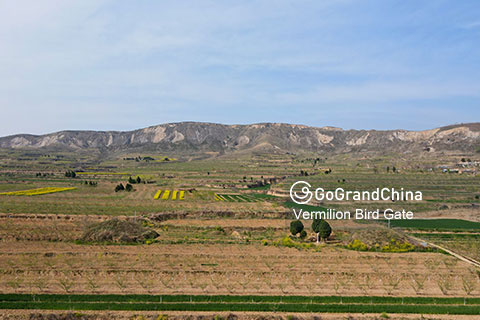
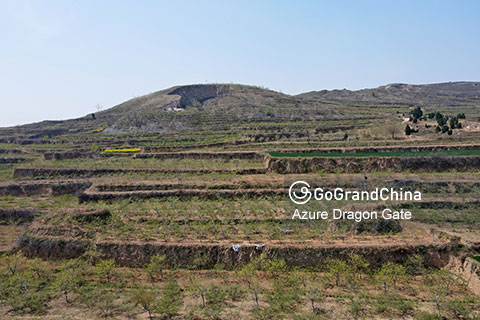
The Azure Dragon Gate
The azure dragon is one of the Four Symbols of the Chinese constellations, representing the direction east. The east gate of Yuanling Mausoleum is called the Azure Dragon Gate. This gate was once connected by an earthen wall to the South Vermilion Bird Gate, West White Tiger Gate, and North Black Tortoise Gate in order to protect the tomb mount. Today, the two earthworks of the gate tower foundation have been terraced by local farmers to grow pepper. Two guarding lions once stood at the gate, but one was lost in history and the other was brought to the Fuping Museum.
The White Tiger Gate
The white tiger is one of the Four Symbols of the Chinese constellations representing the direction west. To protect the tomb mount, the White Tiger Gate was orriginally connected by an earthern wall with the south Vermilion Bird Gate, east Azure Dragon Gate and north Black Tortoise Gate. The ruins of gate towers of the White Tiger Gate are located on a hill about 1 km away across the valley. Today, gate towers still remain in the fields, two stone lions are still guarding the gate at their original position on the mountain top.
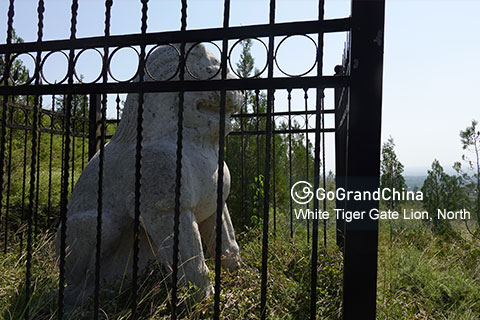
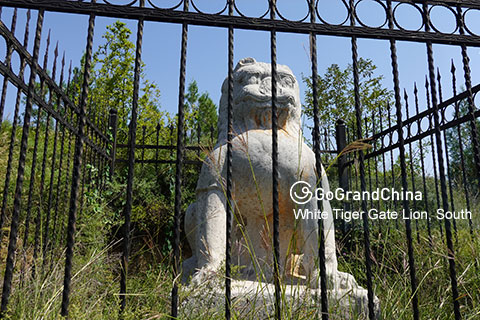
The North Black Tortoise Gate
The black tortoise is one of the Four Symbols of the Chinese constellations representing the direction north. It is usually depicted as a tortoise entwined together with a snake. The Black Tortoise Gate used to be connected by an earthern wall with the East Azure Dragon Gate and West White Tiger Gate. A miniature spirit way was built outside the Black Tortoise Gate in correspondence with the grand spirit way located outside the Vermilion Gate. Today, two lions are still guarding the gate from inside. Three hardly recognizable saddled horses are lined on the west side of the spirit way, two horses are standing on the east side of the spirit way.
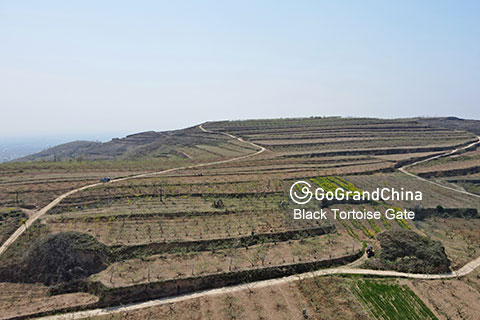
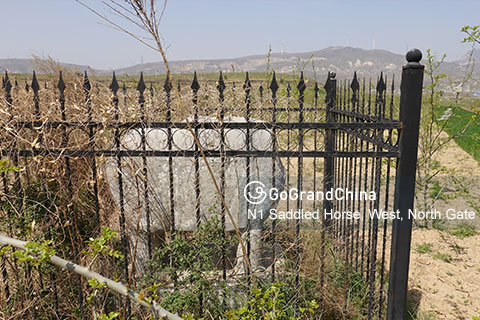
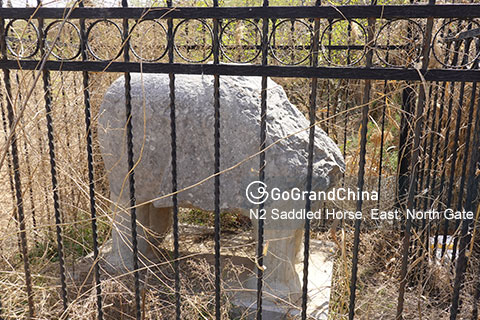
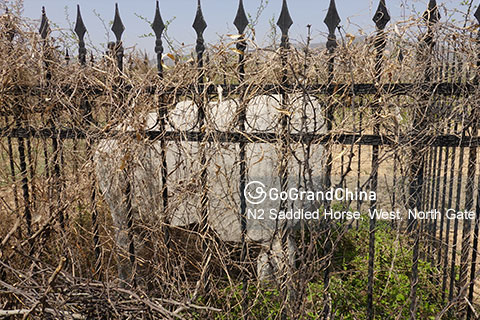
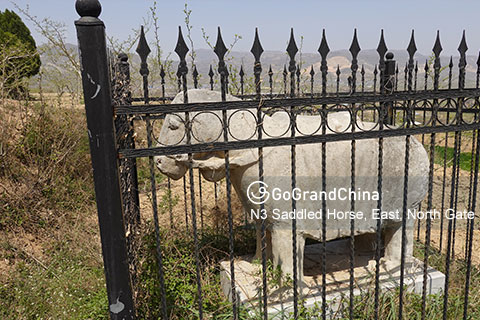
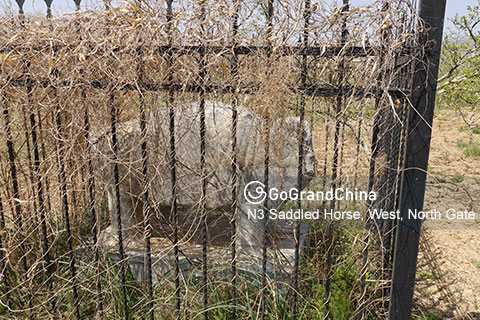
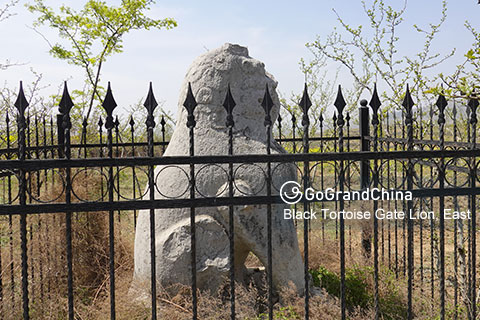
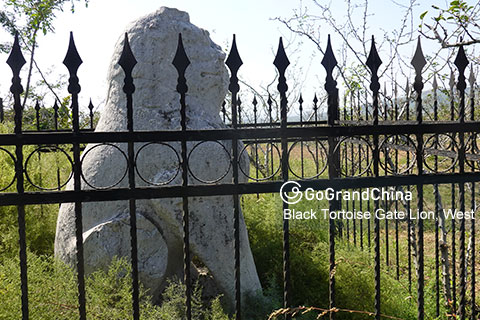
There are no products matching the selection.

